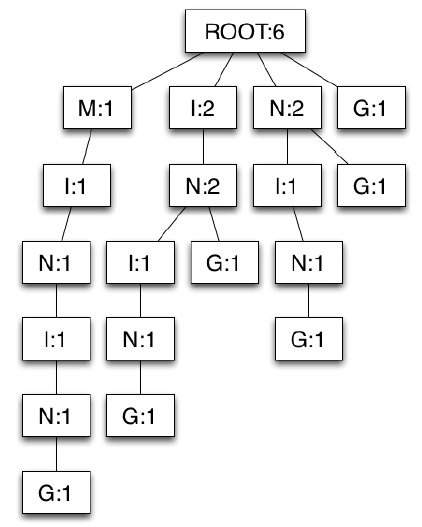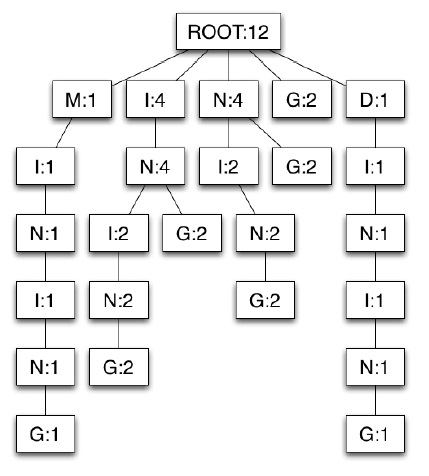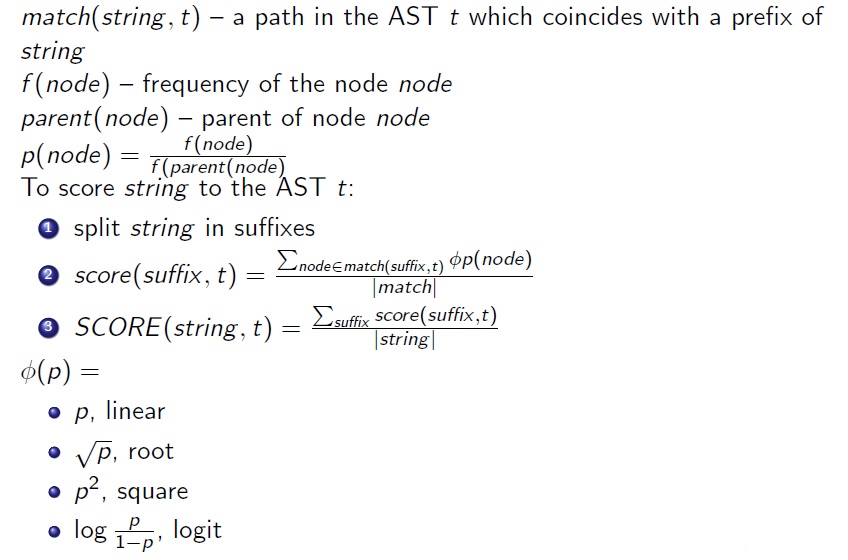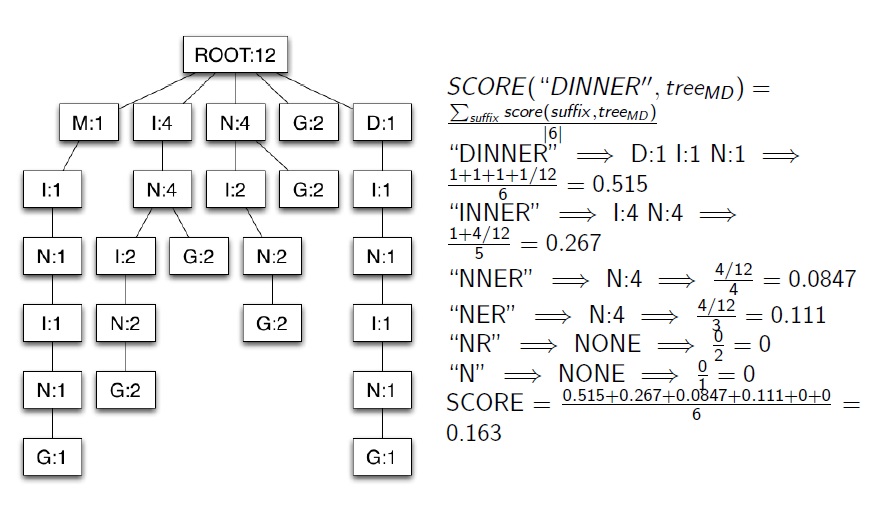Lecture 8. Suffix trees for NLP
Содержание
Text (collection) representation model
Vector Space Models
Vector Space Models, VSM [Salton, Wong, Yang, 1975] : every text is a vector in a space of terms. Usually is used along with cosine similarity measure.
Pro:
- Makes linear algebra operation and thus machine learning applicable
- Is simple and based on human intuition
Contra:
- The more the words are there in the the text, the higher is the cosinesimilarity
- Word order is lost
- Need some additional hacks to use bigrams and ngrams as terms
Applications:
- Information retrieval
- Topic, genre and maybe sentiment classification
- Extractive summarization
- Spam filtering
Generalized Vector Space Models
Generalized Vector Space Models, GVSM [Wong, Ziarko, Wong, 1985]: introduces a term to term correlation in the VSM.
Pro:
- Is still easy
- Synonyms or near synonyms are introduced into the model
- Term to term correlation may be computed in several ways: co-occurrences in the collection under consideration, co-occurrences in a large corpus, thesaurus-based relations
Contra:
- A lot of computations: if jVj = n (the number of terms), there are 2ndimensions in the GVSM
- Word order is lost
- Need some additional hacks to use bigrams and ngrams as terms
Applications: mainly information retrieval
Vector Space Model of Semantics
Vector Space Model of Semantics [Turney, Pantel, 2010]: terms are vector in the space of contexts (usually, also terms).
Pro:
- Is still easy
- Allows to find semantically similar words
- Very loved by scientific community
Contra:
- Word order is lost
- Need some additional hacks to use bigrams and ngrams as terms
Applications:
- Word similarity detection, clustering, classification
- Automatic thesaurus generation
- Word sense disambiguation
- Context-sensitive spelling correction
- Textual advertising
Language Model [Ponte, Croft, 1998]
Language Model [Ponte, Croft, 1998]: a probability distribution over sequences of words.
Unigram model: p(t 1 t 2 t 3 ) = p(t 1 )p(t 2 )p(t 3 )
Bigram model: p(t 1 t 2 t 3 ) = p(t 1 |BOS)p(t 2 |t 1 )p(t 3 |t 2 )p(EOS|t 3 )
Language Model [Ponte, Croft, 1998]: a probability distribution over sequences of words.
Pro:
- The word order is not lost
- Makes Markov chain theory applicable
Contra:
- The problem of unseen words
- How to choose n?
- Long relations between words or sentences (for example, anaphora) are lost
Applications:
- Information retrieval
- Text generation
- Abstractive summarization
- Speech recognition
- Speech generation
To sum up:
- VSM-like models: no word order, algebraic structures, classification of any kind, stemming and lemmatization for dimension reduction
- LM-like models: partially word order, Markov chains, generation of text and speech
- What if new word appears? What if there is a typo? What if stemming is not always correct? Use edit distance on words or stems or use symbol ngrams instead as terms or ...
Suffix tree
Annotated suffix tree (AST)
The suffix tree is a data structure used for storing of and searching for strings of characters and their fragments.
Suffix trees in NLP:
- Text clustering [Zamir, Etzioni,1998]
- Language model for MT [Kennington et al., 2012] and IR [Huang, Powers, 2008]
- Feature generation for text classification [Zhang, Lee, 2006]
Annotated suffix tree
Annotated suffix tree (AST) [Pampapathi, Mirkin, Levene, 2006]:
An annotated suffix tree is a data structure used for computing and storing all fragments of the text and their frequencies. It is a rooted tree in which:
- Every node corresponds to one character
- Every node is labeled by the frequency of the text fragment encoded by the path from the root to the node.
Annotated suffix tree construction
"MINING" has 6 suffixes: "MINING", "INING", "NING", "ING", "NG", "G"
Naive algorithm for AST construction
- Start with \MINING", add it as a chain of nodes with frequencies equal to unity. Add \INING" and \NING" the same way.
- When adding \ING", note that there is already a path from root that encodes / reads \I N". Increase the frequencies in this path by 1. Add "G" to the end of the path. When adding \NG", note \G" and react in the same way.
- Add \G" as a single node with frequency equal to unity.
Using Naive algorithm we add the second string \DINING". Complexity: both O(n2) time and space, where n is the number of input strings. Frequency of the root node is the sum of the first level node frequencies.
Annotated suffix tree scoring
Applications of AST
- Spam filtering [Pampapathi, Mirkin, Levene, 2006]
- Text categorization and clustering [Chernyak, Chugunova, Mirkin, 2010]
- Text summarization [Yakovlev, Chernyak, 2014]
- Taxonomy refinement [Chernyak, Mirkin, 2013]
- German compound splitting [Provatorova, Chernyak, 201x]
- AST as a string kernel [Dubov, 201x]
- Reference graph construction [Dubov, Chernyak, Mirkin, 201x]
- Profound filtering
- Duplicate detection

![Suffix tree: Example from [Gus�led, 1998]](/images/c/c6/L8_2.jpg)



